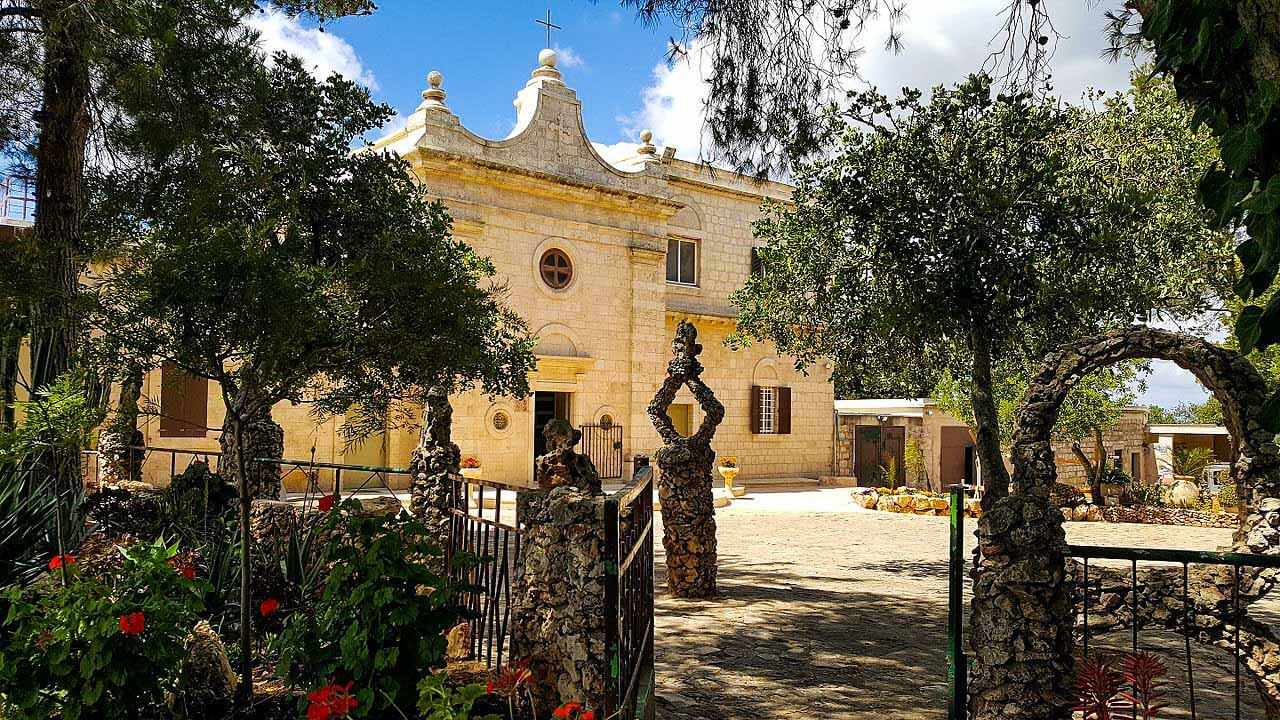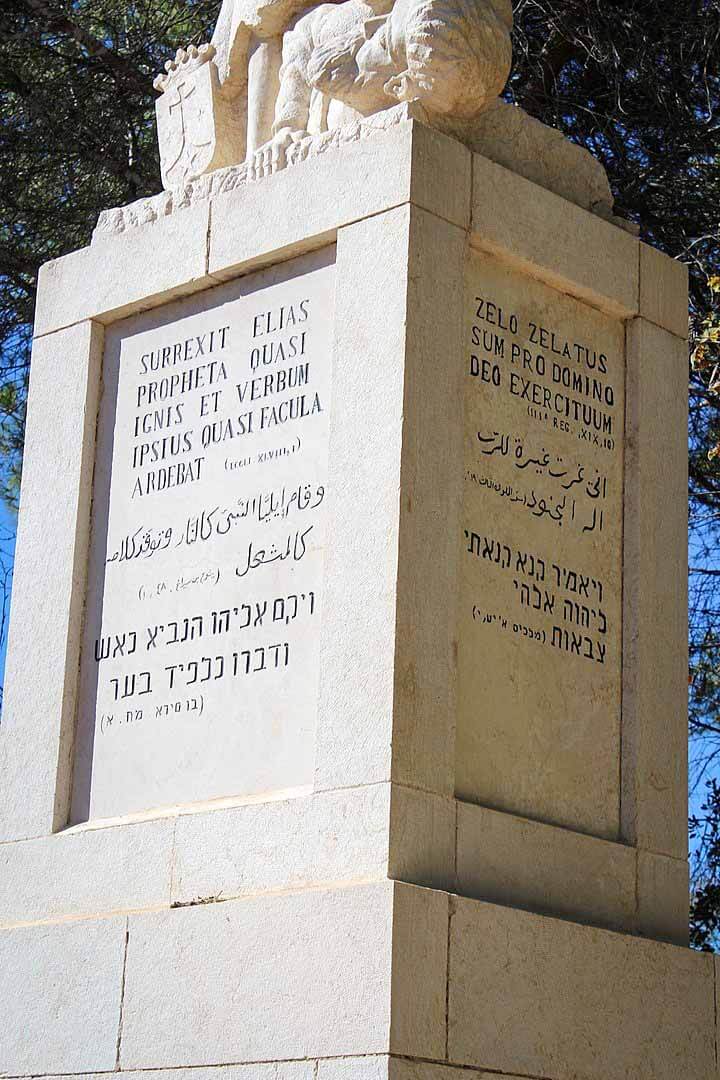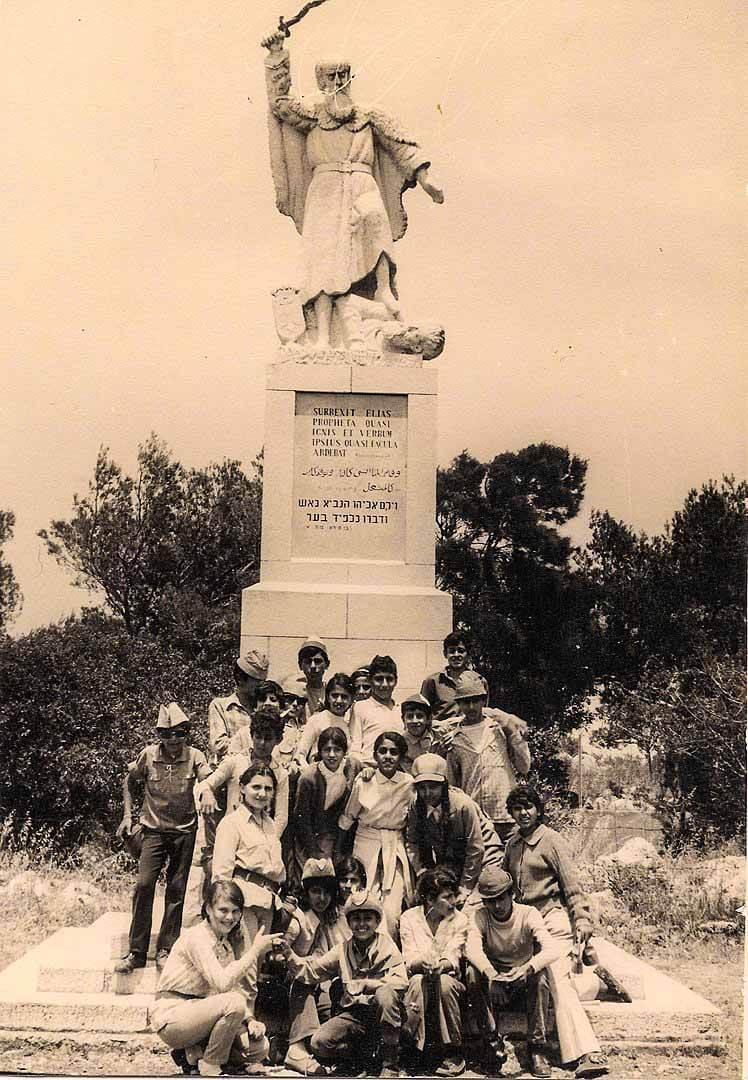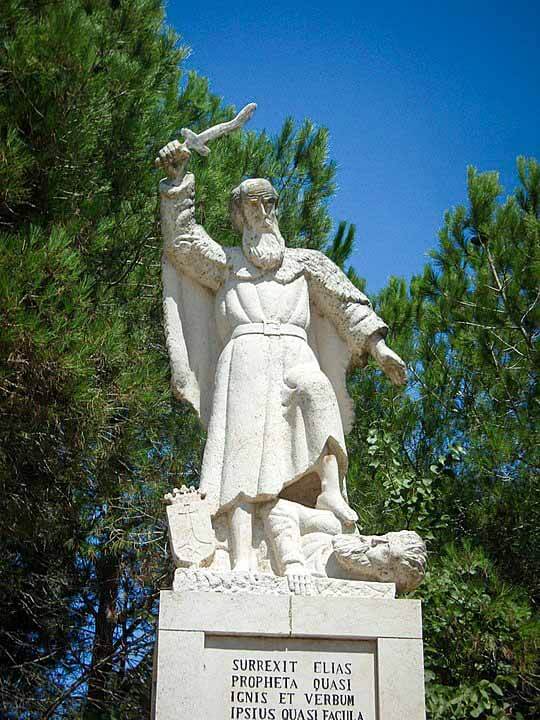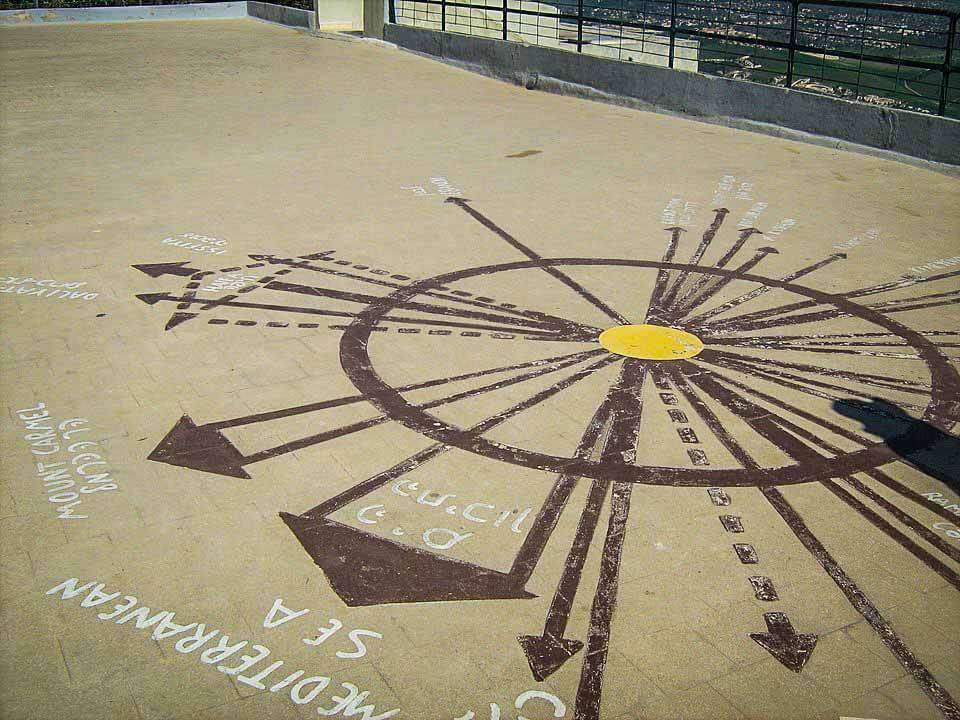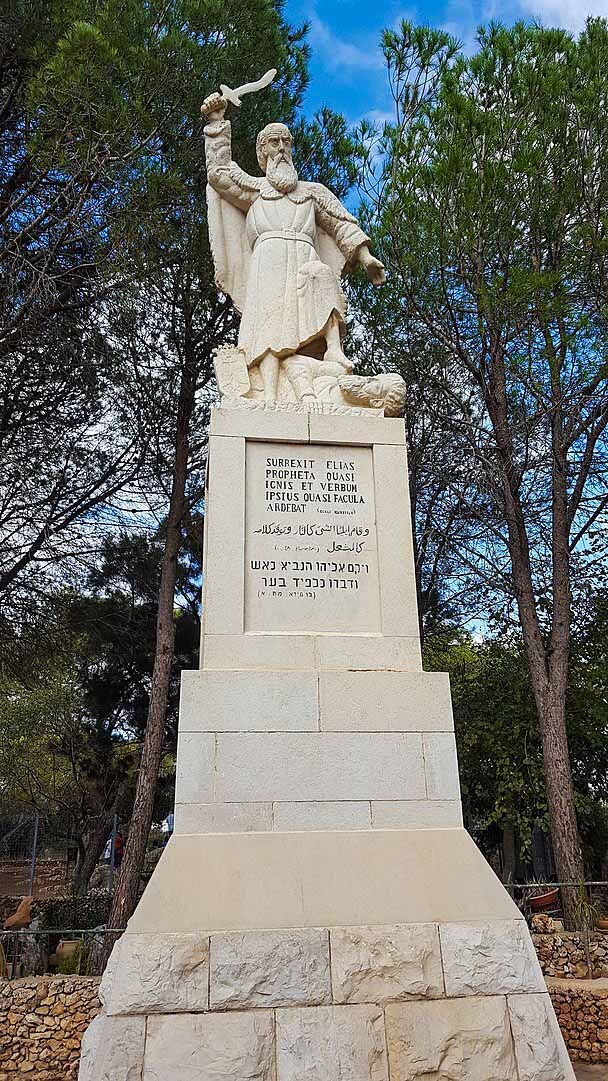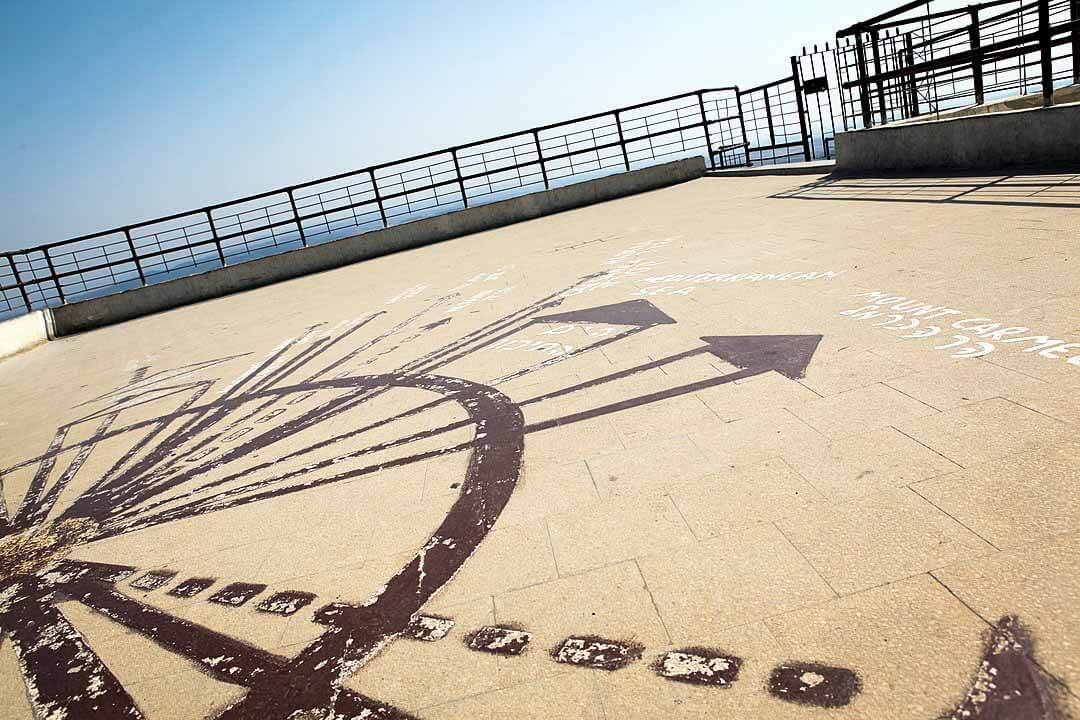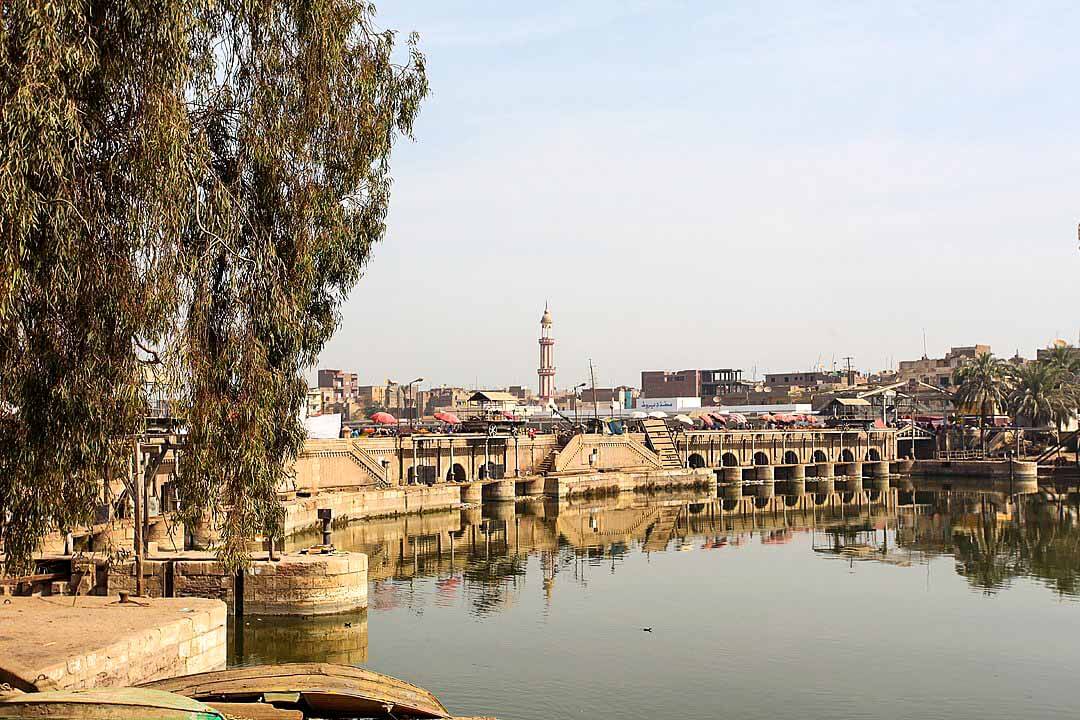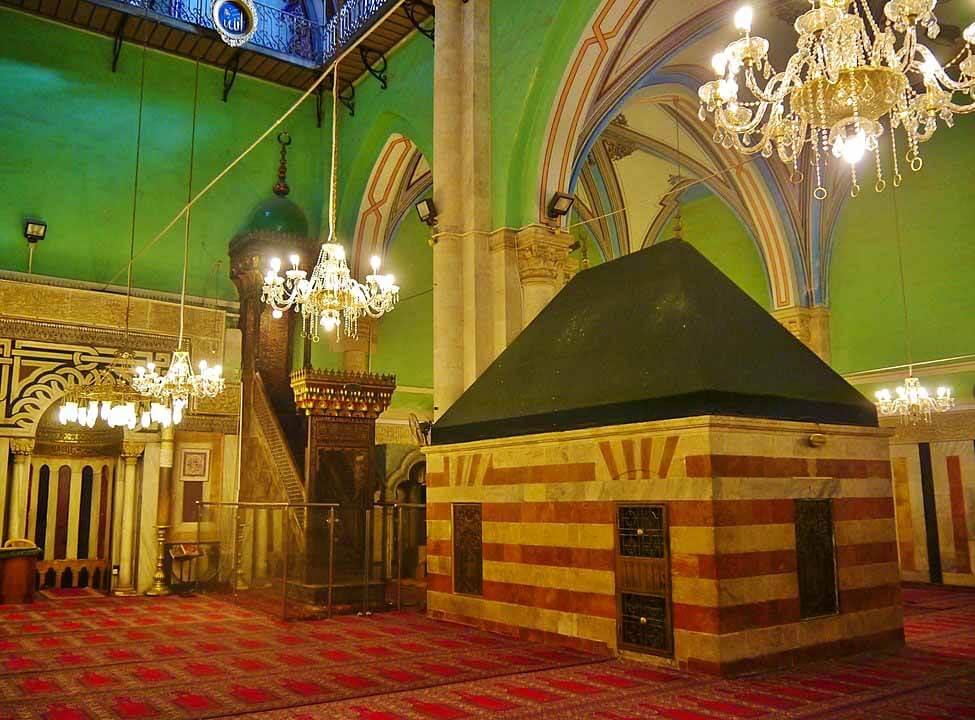Haifa, Israel occupied Palestine
Coordinates: 32.672679, 35.088316
Site on Mount Carmel
This monastery and the statue stands on the site where it is said that the historical showdown between Hz. Ilyas عليه اسلام & 450 false prophets of Baal took place. Allah enables Hz. Ilyas عليه اسلام to prevail and this is the spot! According to tradition took place where the monastery stands.
The monastery is small and simple. However, the location, the story behind the place, and the view are fabulous.
The statue of Hz. Ilyas عليه اسلام, holding a sword in his right hand illustrates the verse in 1 Kings 19:10, ” I have been very jealous for the Lord Allah of hosts”.
Climb the stairs on the building next to the central piazza to have the most beautiful panoramic view. A 360 degree view of the Jezreel valley, the mounts of west Galilee, the northern slopes of the Samaria ridge and the Haifa bay with the Mediterranean sea washing it shores.
If you go there, make sure that the door to the upper deck is open. From there you can see in a good day all of the north of Palestine. Do not forget your camera.
Beautiful views of the Jezreel Valley, well kept gardens, and a very small sanctuary. You actually go up on the roof to get the views, so bring a hat or wear sunscreen if your tour guide is verbose!
Story of Hz. Ilyas عليه اسلام Challenge to Baal
When Ahab (Tyrant king and husband of Queen Jezebel) confronts Hz. Ilyas عليه اسلام, he denounces him as being the “troubler of Israel” but Hz. Ilyas عليه اسلام takes notice of his hypocrisy and tells Ahab that he is the one who troubled Israel by allowing the worship of false Gods.
Hz. Ilyas عليه اسلام then berates both the people of Israel and Ahab for their acquiescence in Baal worship. “How long will you go limping with two different opinions? If the Lord is Allah, follow him; but if Baal, then follow him.”
Hz. Ilyas عليه اسلام speaks with sharp irony about the religious ambivalence of Israelites.
Hz. Ilyas عليه اسلام proposes a direct test of the powers of Baal and the one true God.
The people of Israel, 450 prophets of Baal, and 400 prophets of Asherah are summoned to Mount Carmel. An altar is built for Baal. Wood is laid on the altar. An ox is slaughtered and cut into pieces; the pieces are laid on the wood.
Hz. Ilyas عليه اسلام then invites the priests of Baal to pray for fire to light the sacrifice. They pray from morning to noon without success.
Hz. Ilyas عليه اسلام Mocks “False Gods” of Baal
Hz. Ilyas عليه اسلام ridicules their efforts. “At noon Hz. Ilyas عليه اسلام mocked them, saying, ‘Cry aloud! Surely he is a God; either he is meditating, or he has wandered away, or he is on a journey, or perhaps he is asleep and must be awakened.
They respond by cutting themselves and adding their own blood to the sacrifice (such mutilation of the body was strictly forbidden in the Mosaic law). They continue praying until evening without success.
Sacrifice of Hz. Ilyas عليه اسلام
Hz. Ilyas عليه اسلام builds an altar from twelve stones, digs a huge trench around it, lays wood on it, slaughters another ox, cuts it up, and lays it on the wood. He then orders that the sacrifice and altar be drenched with water from “four large jars” poured three times, filling also the trench.
He asks Allah to accept the sacrifice. Fire falls from the sky, consuming the sacrifice, the stones of the altar itself, the earth and the water in the trench as well.
Execution of the Priests of Baal
Hz. Ilyas عليه اسلام then orders the deaths of the priests of Baal. Hz. Ilyas عليه اسلام prays earnestly for rain to fall again on the land. Then the rains begin, signaling the end of the famine.
Mount Horeb and Hz. Ilyas عليه اسلام escaping the Persecution of Jezebel
Jezebel, enraged that Hz. Ilyas عليه اسلام had ordered the deaths of her priests, threatens to kill Hz. Ilyas عليه اسلام.
Later Hz. Ilyas عليه اسلام would prophesy about Jezebel’s death, because of her sin.
Hz. Ilyas عليه اسلام flees to Beersheba in Judah, continues alone into the wilderness, and finally sits down under a shrub, praying for death.
He falls asleep under the tree; the angel of the Lord touches him and tells him to wake up and eat. When he awakens he finds bread and a jar of water. He eats, drinks, and goes back to sleep. The angel comes a second time and tells him to eat and drink because he has a long journey ahead of him.
Hz. Ilyas عليه اسلام travels for forty days and forty nights to Mount Horeb, where Hz. Musa عليه اسلام had received the Ten Commandments.
Seeking Shelter in a Cave of famous “Cave of Elijah” & Conversation of Allah with Hz. Ilyas عليه اسلام
He seeks shelter in a cave. Allah again speaks to Hz. Ilyas عليه اسلام:[39] “What doest thou here, Hz. Ilyas عليه اسلام?”.
Hz. Ilyas عليه اسلام did not give a direct answer to the Lord’s question but evades and equivocates, implying that the work the Lord had begun centuries earlier had now come to nothing, and that his own work was fruitless.
Unlike Hz. Musa عليه اسلام, who tried to defend Israel when they sinned with the golden calf, Hz. Ilyas عليه اسلام bitterly complains over the Israelites unfaithfulness and says he is the “only one left”.
Up until this time Hz. Ilyas عليه اسلام has only the word of Allah to guide him, but now he is told to go outside the cave and “stand before the Lord.” A terrible wind passes, but Allah is not in the wind.
A great earthquake shakes the mountain, but Allah is not in the earthquake. Then a fire passes the mountain, but Allah is not in the fire.
Then a “still small voice” comes to Hz. Ilyas عليه اسلام and asks again, “What doest thou here, Hz. Ilyas عليه اسلام?”
Hz. Ilyas عليه اسلام again evades the question and his lament is unrevised, showing that he did not understand the importance of the divine revelation he had just witnessed.
Note: Some parts of the story mentioned is taken from Hebrew Bible & Jewish historians.

